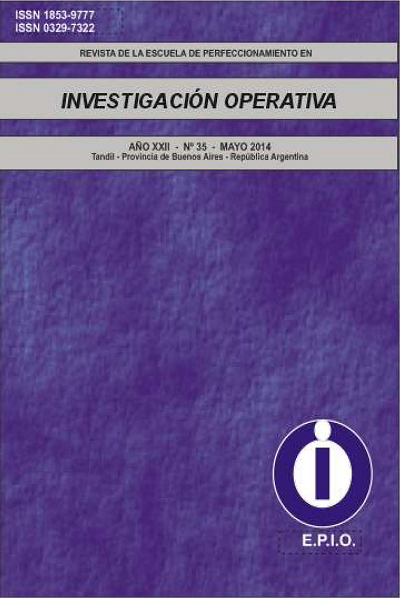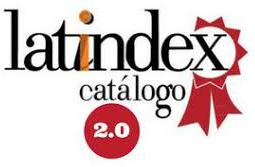Demand elasticity estimation for a park & ride facility by means of discrete choice modelling
Palabras clave:
discrete choice, park and ride, demand estimation, pricesensitivity, elasticityResumen
Park & ride facilities have been proposed as a solution for the traffic problem of large cities prevalent around the world. In this article we define them as large parking facilities located in the surroundings of the city, with the purpose of deterring commuters from using their cars in the city centre. Building a park &
ride facility requires a large investment. Demand estimation at various price levels is a critical input for the project evaluation.
In a previous article (Picasso et al., 2012) we have modelled the demand for a park & ride facility in the north access to Buenos Aires city via discrete choice methods, determining its attractiveness for different segments of the target population. In this article we focus on the price sensitivity of demand. A predicting application was developed to estimate the demand at different price levels for a range of demographic characteristics. The value of time is also determined, by means of the compensated variation.
Descargas
Referencias
BEN-AKIVA, M.; LERMAN, S. (1985): DISCRETE CHOICE ANALYSIS: THEORY AND APPLICATION TO TRAVEL DEMAND. MIT Press. Cambridge, MA.
BEN-AKIVA, M.; BIERLAIRE, M. (1999): “DISCRETE CHOICE METHODS AND THEIR APPLICATION IN SHORT TERM TRAVEL DECISIONS”. In Hall R. (1999): The handbook of transportation science. Kluwer, Dordrecht, The Netherlands, 5-33.
BEN-AKIVA, M.; BOLDUC, D.; BRADLEY, M. (1993): “ESTIMATION OF TRAVEL MODE CHOICE MODELS WITH RANDOMLY DISTRIBUTED VALUES OF TIME”. Transportation Research Record, 1413, 88-97.
BOS, I. D. M.; VAN DER HEIJDEN, R. E. C. M.; MOLIN, E. J. E.; TIMMERMANS, H. J. P. (2004): “THE CHOICE OF PARK AND RIDE FACILITIES: AN ANALYSIS USING A CONTEXT-DEPENDENT HIERARCHICAL CHOICE EXPERIMENT”. Environment and Planning A, 36 (9): 1673-1686.
DIJK, M.; MONTALVO, C. (2011): “POLICY FRAMES OF PARK-AND-RIDE IN EUROPE”. Journal of Transport Geography, 19 (6): 1106-1119.
HENSHER, D. A. (1976): “THE VALUE OF COMMUTER TRAVEL TIME SAVINGS: EMPIRICAL ESTIMATION USING AN ALTERNATIVE VALUATION MODEL”. Jour. Of Transport Economics and Policy, 10(2): 167-176.
HENSHER, D. A. (1994): “STATED PREFERENCE ANALYSIS OF TRAVEL CHOICES: THE STATE OF THE PRACTICE”. Transportation, 21: 107-33.
HENSHER, D. A.; GREENE W. H. (2003): “THE MIXED LOGIT MODEL: THE STATE OF PRACTICE”. Transportation 30: 133-176.
HUBER, J.; ZWERINA, K. (1996): “THE IMPORTANCE OF UTILITY BALANCE IN EFFICIENT CHOICE DESIGNS”. Journal of Marketing Research, 33 (August): 307-317.
MC FADDEN, D. (1973): “CONDITIONAL LOGIT ANALYSIS OF QUALITATIVE CHOICE BEHAVIOR”. In Zarembka P. (ed.): Frontiers of Econometrics, Academic Press, New York.
MC FADDEN, D. (1975): “THE MEASUREMENT OF URBAN TRAVEL DEMAND”. University of California, Berkeley, USA.
MC FADDEN, D.; TALVITIE, A.; COSSLETT, S.; HASSAN, I.; JOHNSON, M.; REID, F.; TRAIN, K. E. (1977): “DEMAND MODEL ESTIMATION AND VALIDATION”. Final Report, Volume V, Urban travel demand forecasting project. Institute of Transportation Statistics, Univ. of California, Berkeley.
MC FADDEN, D.; TRAIN, K. E. (2000): “MIXED MNL MODELS FOR DISCRETE RESPONSE”. Journal of Applied Econometrics, 81: 447-770.
PICASSO, E. P.; BONOLI, M.; PEÑA, G.; MERMOZ, O. (2012): “ESTIMACIÓN DE LA DEMANDA DE N ESTACIONAMIENTO
PERIFÉRICO MEDIANTE MODELOS DE ELECCIÓN DISCRETA”. Anales de la Escuela de Perfeccionamiento de Investigación Operativa, ISSN 1863-9777.
RISA HOLE, A. (2004): “FORECASTING THE DEMAND FOR AN EMPLOYEE PARK AND RIDE SERVICE USING COMMUTERS’ STATED CHOICES”. Transport Policy, 11 (4): 355-362.
THURSTONE, L. L. (1927). “A LAW OF COMPARATIVE JUDGMENT”. Psychological Review, 34: 273-286.
TRAIN, K. E. (2009): “DISCRETE CHOICE METHODS WITH SIMULATION”. Cambridge Univ. Press.
Descargas
Publicado
Número
Sección
Licencia
Atribución — Usted debe dar crédito de manera adecuada, brindar un enlace a la licencia, e indicar si se han realizado cambios. Puede hacerlo en cualquier forma razonable, pero no de forma tal que sugiera que usted o su uso tienen el apoyo de la licenciante.
NoComercial — Usted no puede hacer uso del material con propósitos comerciales.
CompartirIgual — Si remezcla, transforma o crea a partir del material, debe distribuir su contribución bajo la misma licencia del original.







